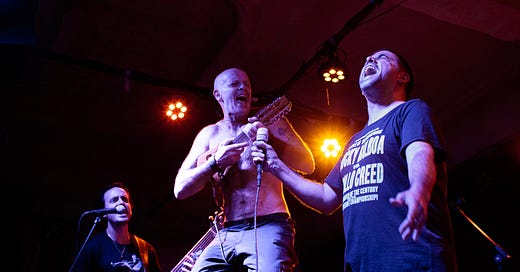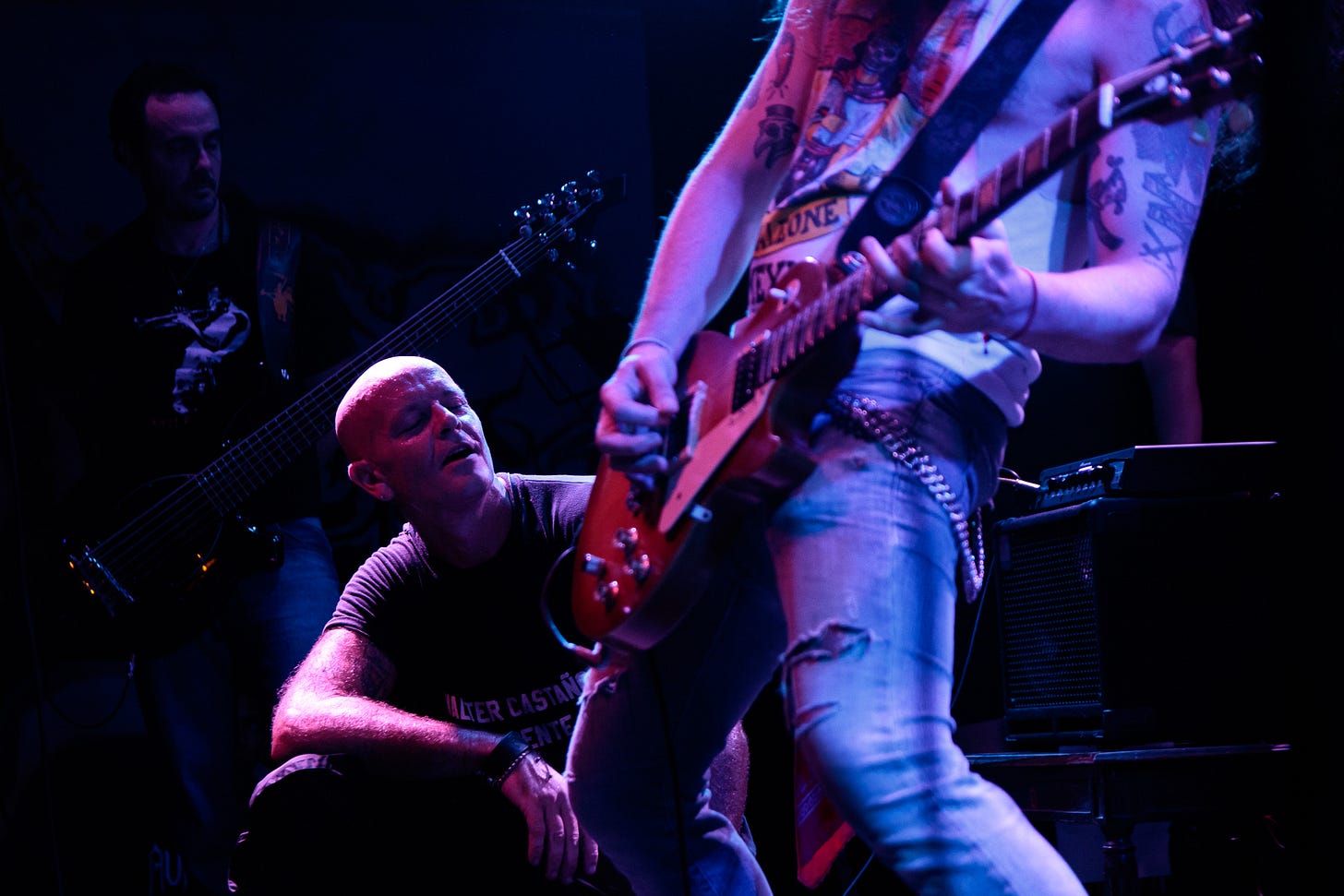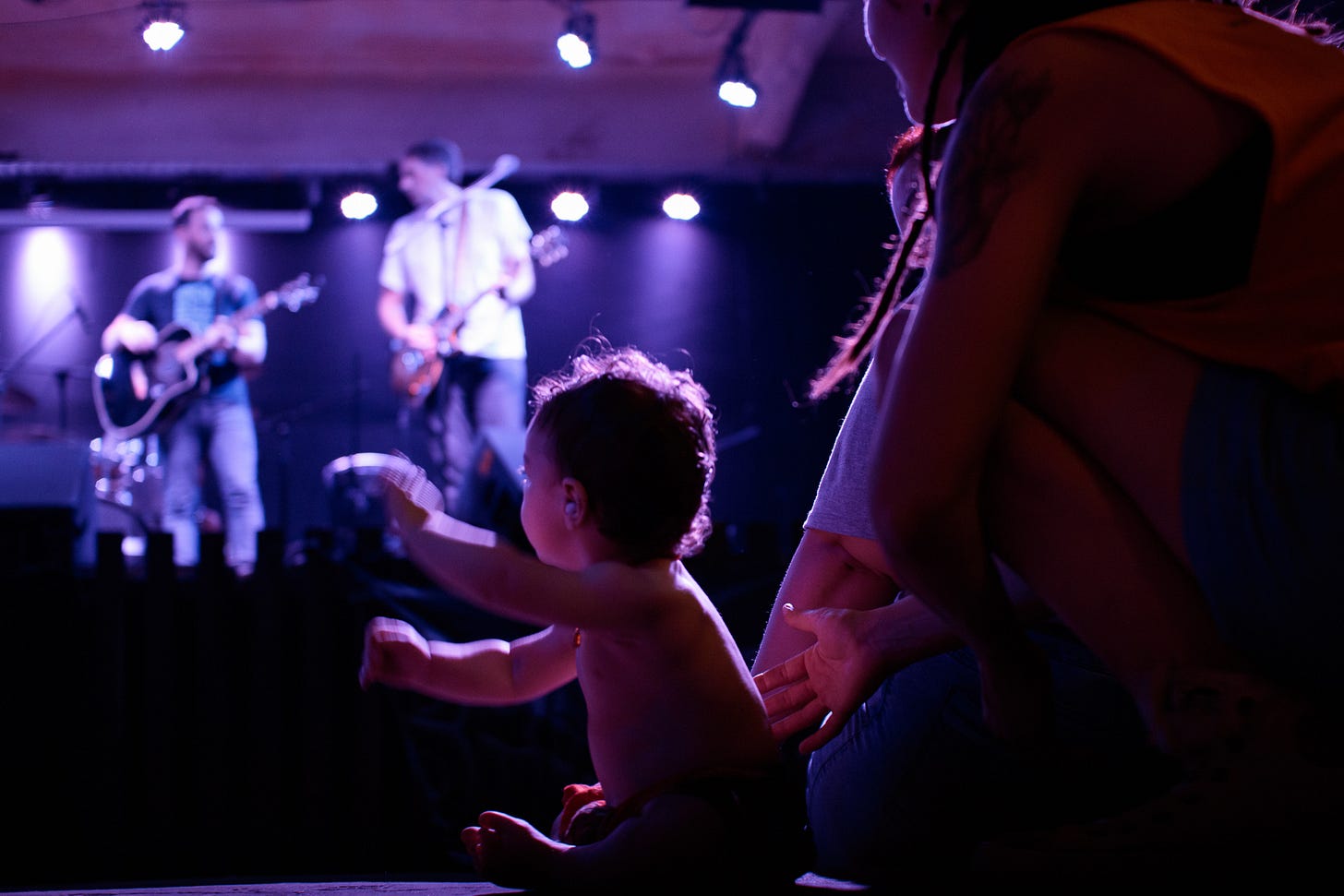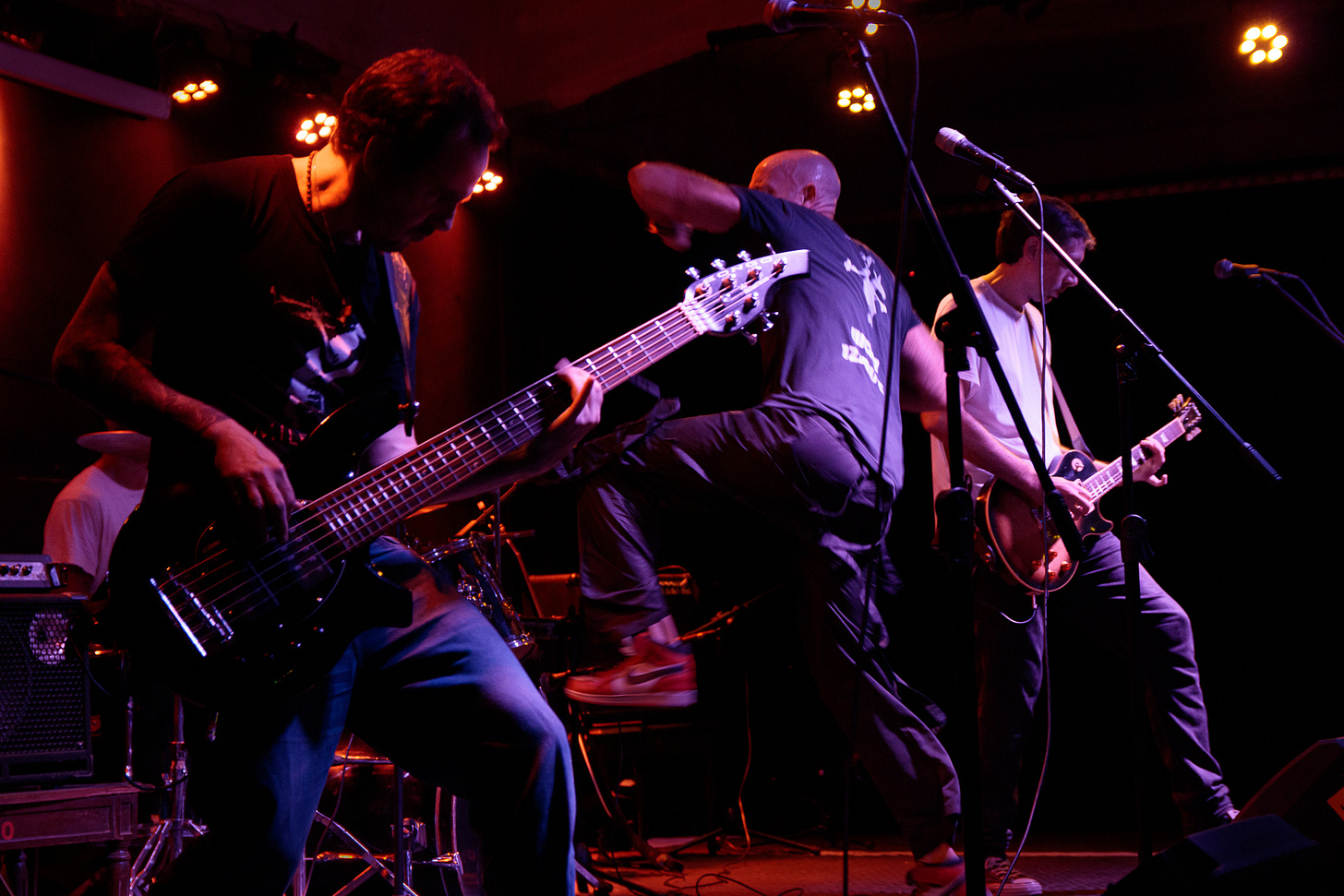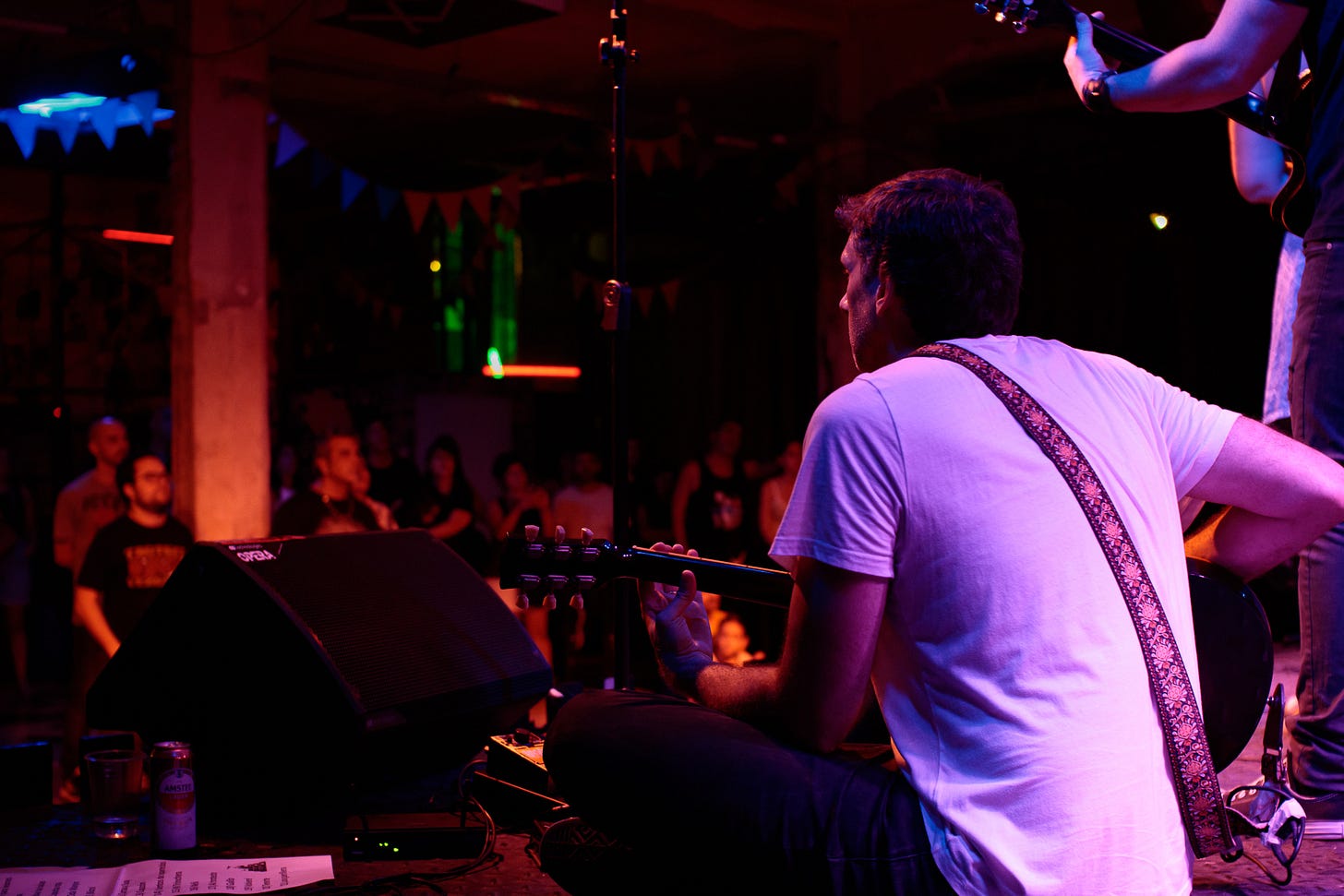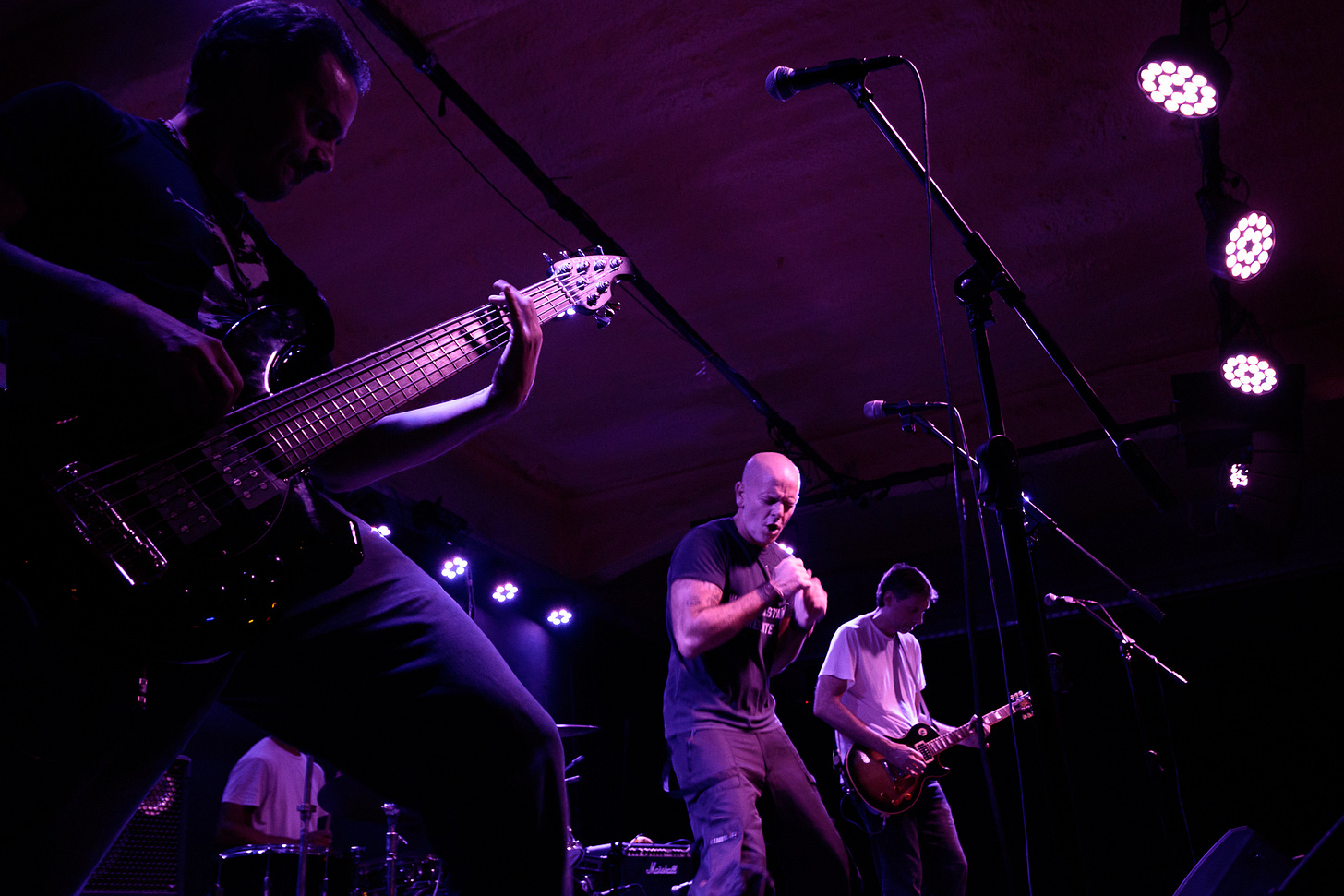No, really, you don't need to buy the latest thing to tackle your artistic project. And I'm telling you this as someone whose all trades and hobbies are linked to technology or directly involve a computer. That's what today's article is about—we'll look at examples and try to understand why there's a belief that what we have isn't good enough and we need more.
To start off, we have the usual bi-weekly playlist of full albums on Spotify, today featuring a lot of chill instrumental music. And I bring you something different and quite rare for the video, but in line with the theme: a complete album of instrumental electronic music recorded live by Heinbach using a toy Casio keyboard and an iPad app.
The photos accompanying this post are from the latest Brancaleone show at the Tacheles Cultural Center on March 9, 2024.
Focus is a bi-weekly newsletter written by Nacho Dramis. Subscribe to get it free in your email. If you enjoy the content and find it useful, you can make a financial contribution to support the project through Cafecito (Argentina) or PayPal (Worldwide). Making this content for free and ad-free takes a lot of time and effort!
Este newsletter también está disponible en español.
A little history
Let's look at some examples of artists from different mediums from whom we can learn a thing or two.
Jordan Mechner, the creator of the historic video game Prince of Persia, recounts in an ArsTechnica article how he put together the game's animations by copying frames from a movie, filming his brother running in the backyard, and creating sprites by hand by tracing the negatives. As a bonus, he shares how in his quest to overcome the memory limitations of the Apple II, he ended up creating the game's antagonist, which gave it the hook it needed.
Mortal Kombat did something similar, creating entire characters that are now iconic in the franchise with their own unique characteristics, but originally, they were simply alternative color palettes with new moves. It's not the best video on the subject, but it works to understand the idea if you have no idea what I'm talking about.
Mixing a bit of video games with music, the channel 8-bit Music Theory explains how Koji Kondo created the music for The Legend of Zelda: Ocarina of Time for the N64, using only FIVE NOTES for the melodies, supporting that decision based on the instrument that gives the game its name and its main mechanic. It gets a bit intense on music theory sometimes, but it's still understandable.
The electronic music legend David Guetta recounts in an interview with Capital Dance the surprise he had when entering Daft Punk's studio, believing that because of the music they made and their good upbringing, they would have top-notch equipment, only to find out they had an almost homey setup.
Ross Halfin is a rock (and particularly metal) photographer responsible for half of the photos that adorned your room during your adolescence, all taken with analog cameras, because obviously there was no other option back then. However, he still uses them today for his black and white material. In this video from the Gibson TV channel, he shares a couple of anecdotes.
Speaking of rock, did you know that Brian May's Red Special guitar, from Queen, was made by his father using leftover parts from a fireplace and other items lying around the house, and he plays it with a coin? Or that the guitar Slash used to record "Appetite for Destruction" with Guns N' Roses wasn't an original Gibson Les Paul, but a replica? If you didn't know, go ahead and finish with a "naaaaah" and Google it, I'll be here waiting.
And so I could go on writing until the end of time. Almost all the works that fascinate you were created by people whose primary resource and tool was what they had between their ears, not something they bought with a loan.
And then?
That thing happening to you is GAS
No, I'm not talking about the digestive event caused by last night's burger. GAS (Gear Acquisition Syndrome) is real, and the entire art industry is designed to exacerbate it and make you believe that what you have isn't enough, that it's not what "the professionals" use.
Today, especially if you consume a lot of content on the internet, everything seems to suggest that if you don't have X thing, don't bother because someone else does it better. That's because of the economic structure on which the internet operates (advertising) and the most effective way content creators have to make money (affiliate links and equipment reviews).
Learning is an iterative process, and tools will limit you when you exhaust their possibilities. It's not that incredible tools will be counterproductive - and we all know how nice it is to buy junk - but maybe it's a good idea to follow a logical progression of equipment in learning, among other things, to avoid "decision paralysis," where you get dizzy with so many options and don't choose any. Do what you can, with what you have, and the rest will come. What sets you apart from artists who manage to publish their work isn't the tools or skills; it's that those artists simply took action without overthinking it.
The reality is, if things aren't working out, what you lack isn't a gadget, it's practice. That's how cruel and straightforward it is. Doing it wrong until it comes out right, understanding where you failed (and where you succeeded), is the only key. Once you have the skills, you'll feel the progress that all those tools and accessories enable.
No, you won't play better soccer by buying Messi's cleats... All the pros learned barefoot, with torn cleats, borrowed ones, or whatever shoes they had.
No, you won't draw better by buying that box of 1500 German pencils... The best artists I've known in my life worked wonders with an office pen.
No, you won't edit photos better if you buy a supercomputer... Any computer with 8GB of RAM and an i5 processor from the 3rd generation onwards or equivalent, without a dedicated graphics card, can run Photoshop and Lightroom CC stably and relatively decently, not to mention free software with the same functions.
Even less so for programming. That can be done with anything, open a notepad and start writing code. Done.
Technical limitations can even be intentionally used as a source of creativity by setting rules to frame creativity. Can't start a song? Challenge yourself to do it in 20 minutes, with two instruments and 4 random chords. Having trouble taking a photo? Limit yourself to 36 shots per day and don't use the screen or automation, as if it were an old analog camera. Don't know where to start a story? Grab a random sentence from a random book in your library and start working from there. These kinds of exercises will give you much more experience and ideas than a new gadget.
Additional reading
An article I wrote myself several years ago on Tecnovortex about photography without "professional cameras" (in spanish).
https://tecnovortex.com/no-necesitas-plata-para-sacar-buenas-fotos/
Two videos by Venus Theory, a channel I love. The first one talks about these types of exercises to focus your work, and the second one is simply called "Your gear doesn't matter."
Capitalism, creativity, and music. Video by Red Means Recording, an electronic music artist who often works with the portable synthesizer Teenage Engineering OP-1, and he discusses various topics while showcasing his creative process.
Focus is a bi-weekly newsletter written by Nacho Dramis. Subscribe to get it free in your email. If you enjoy the content and find it useful, you can make a financial contribution to support the project through Cafecito (Argentina) or PayPal (Worldwide). Making this content for free and ad-free takes a lot of time and effort!
Another way to support the project is by purchasing prints and various items with my photos in my international store on RedBubble. I don't have a store for Argentina yet, but I hope to solve that soon.
The links to Notion and Moment are affiliate links, which means that if you buy something from them, you pay the same and I earn a commission.
You can also follow me on Instagram, Behance, and Twitter. Sharing my articles helps a lot and is free :)
Este newsletter también está disponible en español.
Thank you for reading!

